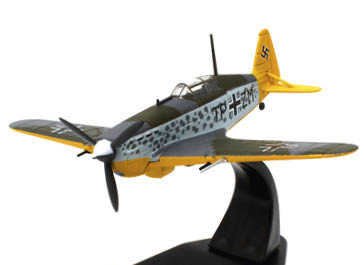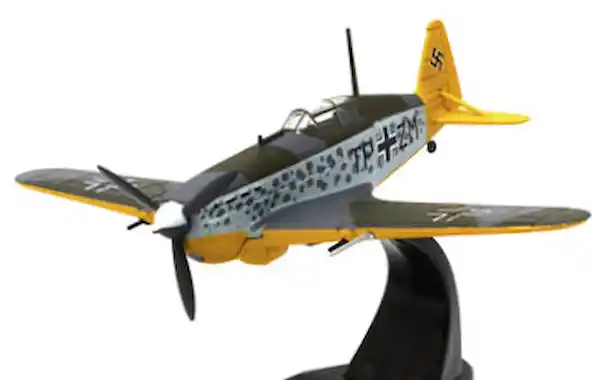20 December 2023
|
Helping you put a price on your collection
Most diecast models were made primarily as toys, up until about 35 years ago. They were designed to be played with and, as a result, most suffered damage to their paintwork or worse. Adult collectors will want their models to be in the best possible condition, so this has become a major factor in determining the value of a particular item, coupled with its rarity.

You will often see the term ‘mint and boxed’ used with regard to diecast models which are being offered for sale. This expression really refers to a model which has not been played with at all and is as it left the factory. The model must be complete, with no damage whatsoever to paintwork or parts. Equally, the box must be in perfect condition, with no scuffs, tears, missing flaps or damaged cellophane window.
Suggested article: A Guide to Starting and Growing Your Diecast Car Collection
Diecast Price Guides
Obviously, for a model which might be, say, 50 years old, to have survived in such condition is rare, which gives it a higher value. The various price guides, such as Ramsay’s British Diecast Model Toys Catalogue (you can get your copy at www.collectors-club-of-great-britain.co.uk/Store/Reader-Offers), published by Warners Group Publications, always quote mint and boxed prices, established over the years by observations of prices raised at specialist auctions and asked and obtained by dealers.
However, mint and boxed models are in the minority, although it is sometimes surprising just how many have survived for so many years in such good condition. Most older models will be less than perfect. They will still have a value, but this will be a proportion of the mint and boxed price.
You can take anything between 20% and 40% off the top price if either the box or the model shows any signs of damage, chips or scuffing to the paintwork or the cardboard of the box. Equally, if the model is really mint, but is without a box, we are talking about 70% of top value. It might seem crazy that the packaging constitutes such a high proportion of the overall value, but it does make a considerable contribution to the rarity of the model.
From here, the degree of damage to the model will adversely affect its price. A slightly chipped model is likely to be worth about 50% of the top value, while heavier chipping – more paint off than on – can take the value down to just 10% of the mint and boxed price, while any damage to the casting or missing parts will cause a similar reduction in value.
Restored diecast models
Repainted or restored models are another matter. Even a high quality repaint can be recognised quite easily, disturbed rivets, overspray – or lack of it – giving the game away, but they could be worth as much as 20-30% of top price, although usually little more than a model in original but poor condition.
Not all rare models, even in mint and boxed condition, will have a high value. There are certain models which are not desirable in any condition – the unattractive Dinky Toys Elevator Loader springs to mind. Some, like the well-known Corgi Toys James Bond Aston Martin or Batmobile are common in played-with condition, which is not surprising considering how many were made, but rare in really top mint and boxed condition, so there will be a wide range of values.
With regard to more recent models, the majority of those produced will have survived, with most still mint and boxed. Models of Yesteryear, Lledo Days Gone, Corgi Classics and the like have little value unless in perfect condition, in perfect boxes. Equally, few can really be regarded as ‘rare’. There are exceptions, but changing fashions in collecting will also serve to keep the value of many of them to little more than was paid for them originally.
The two most common reasons for interest in the value of diecast models is for insurance purposes or if you want to dispose of them. As far as the former is concerned, reference to a price guide and this article should give you an idea of what your collection adds up to.
If you have a large collection to dispose of, the best bet would be one of the specialist auction houses. For a few models, an advert in Diecast Collector (www.collectors-club-of-great-britain.co.uk/Store/Back-Issues/diecast-collector) or Collectors Gazette (www.collectors-club-of-great-britain.co.uk/Store/Back-Issues/collectors-gazette) would be a good idea, or you could take the models along to a toy fair and offer them around. Remember that if you are selling an item, or items, to a dealer, he will again give you a proportion of the value of the item, as he then has to take it into stock and offer it for sale at a profit.
For the collector to really understand the relationship between condition and values, there is no substitution for experience. Visiting toy fairs, watching auction prices, observing what is on offer, talking to, buying from and selling to reputable dealers will all add to your knowledge. But remember, the value of the item to you is the most important thing. The model might be worth hundreds of pounds, but if you don’t like it, or aren’t interested in it or the vehicle modelled, that rather takes the gloss off it.
Equally, if it’s a model you’ve had since childhood or a model of your favourite type of car, it’s probably priceless...
Toy collectors can get the latest collecting news by signing up for the Collectors Club of Great Britain’s newsletter.







